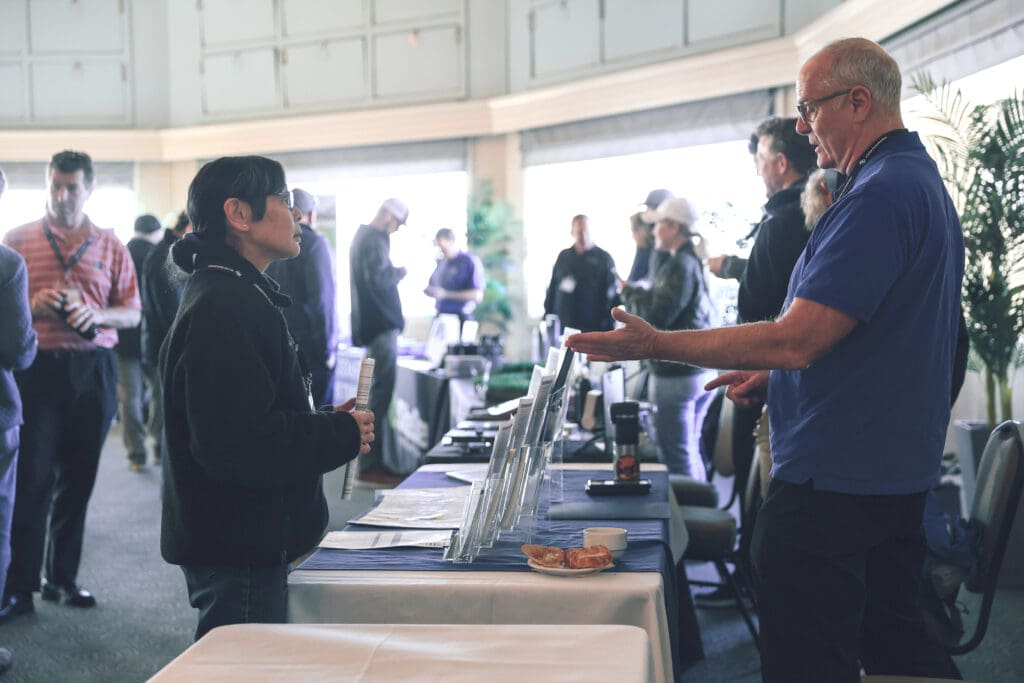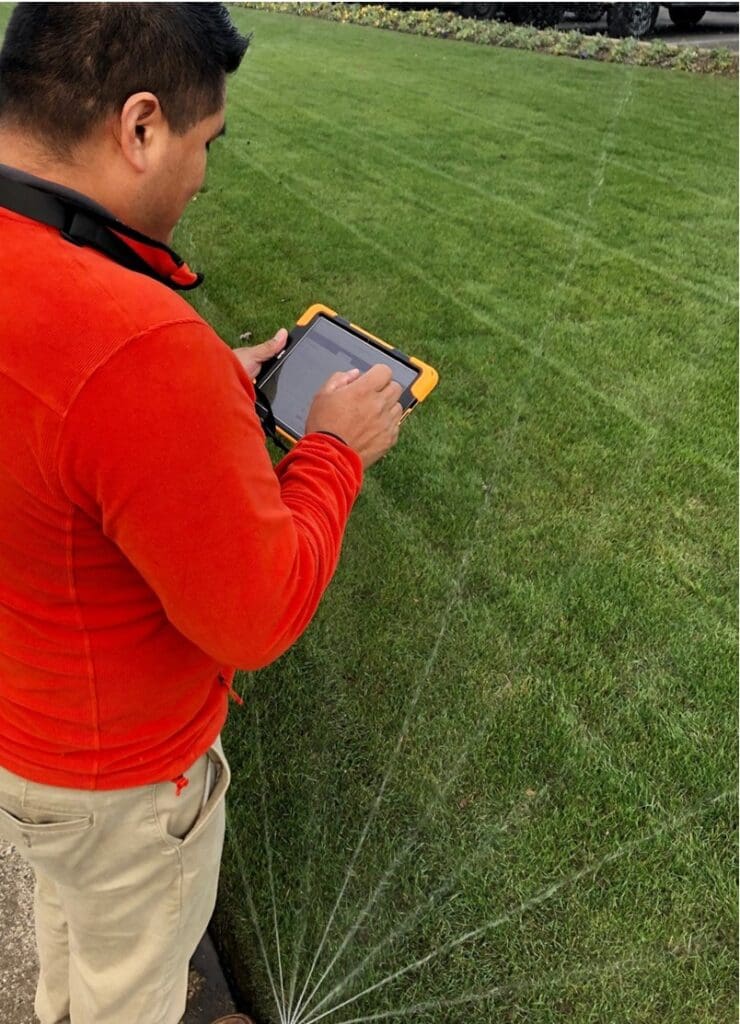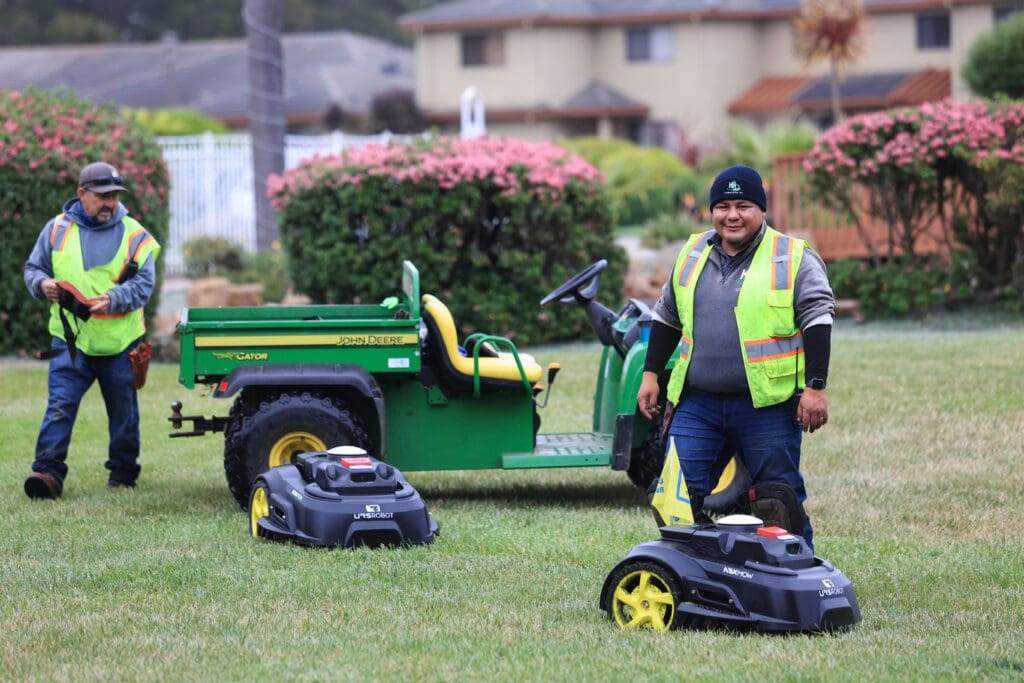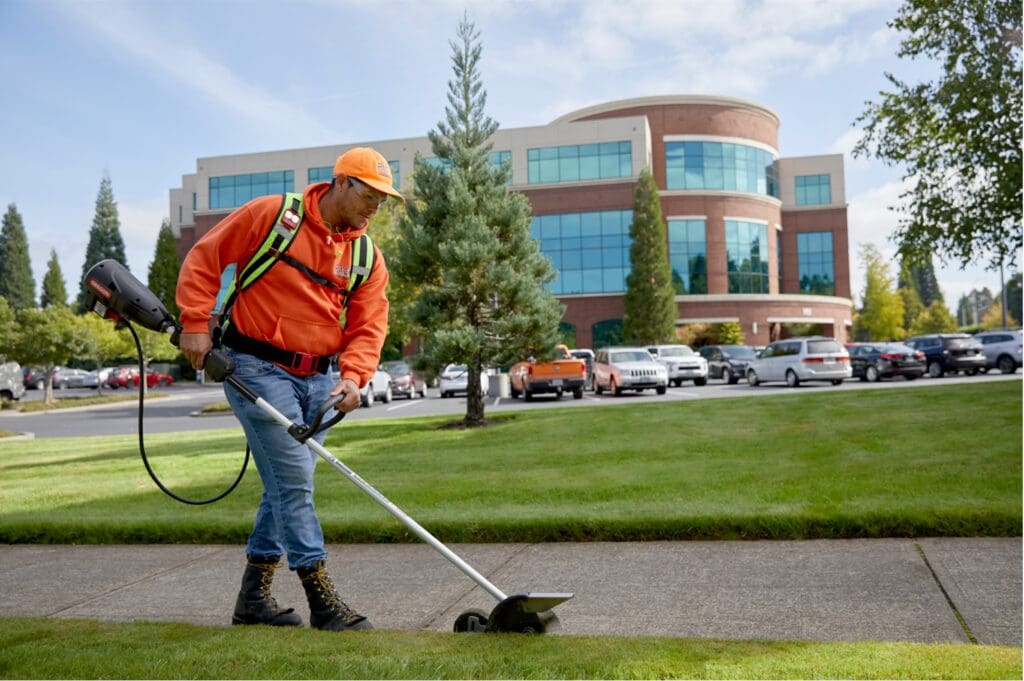
There are numerous elements of the lawn and landscape business that are out of your control, but how ambitious you are when it comes to innovation is one aspect that you can manage. Monitoring what new products and software are available, what the economy is doing and what future sustainable practices to implement can all help your business get ahead in the game.
“I think it takes getting out of your bubble,” says Justin White, owner of K&D Landscaping, Inc., based in Watsonville, California. “Get out of your box. We often just focus on the day-to-day fires, focus on our business, and our needs, and our challenges. I think the best way to get ahead of the curve is to step out of the day-to-day on, ideally, a weekly basis mentally. At least on a monthly basis, physically leave your company. It’s really eye-opening, even if you drive two or three hours in any direction, to see the differences that these other companies are doing. Usually, they’re doing something different.”
Niwar Nasim, president of Nasim Landscape, based in Puyallup, Washington, says you have to have an open mind and not get stuck in a routine.
“Just constantly be yearning to learn,” Nasim says. “Never be content in thinking that you’ve got it all figured out. Things are changing rapidly.”
Bob Grover, owner of Pacific Landscape Management, based in Hillsboro, Oregon, says it is critical to ask your customers what they desire and need continually and to experiment with new technologies and strategies.
“It’s an ever-changing world, and if you don’t prepare yourself to adapt to change, you’ll be left behind,” Grover says. “Change is scary, but if you’re not prepared for change, you won’t survive.”
Staying in the Know
So, where do you find out about these great, modern innovations to implement in your business? Many in the industry learn about new best practices and equipment by attending industry events throughout the year and connecting with peer groups.
“Our involvement in NALP is a huge piece of networking with other companies and working with our vendors at trade shows to see what the new technologies and strategies are,” Grover says. “We also stay very in tune with our local universities through our recruiting strategies to find the future talent that is focused on entering our profession to partner with them on innovative ideas.”

Grover says they often discover new thoughts and ideas from the students who intern with his company.
“Sometimes you get in a rut of this is the way it is, this is the way we have to do it, and this is the way that works,” Grover says. “Having the students around is very motivating to say, ‘Hey, let’s think of some crazy ideas.”
White says that he attends everything from ELEVATE to charity golf events hosted by his state landscape association. He encourages others not to stick to just industry-specific peer groups.
“I think landscapers have a tendency to stay focused on landscaping,” White says. “We definitely make an effort to step outside of the landscape industry to try to get ideas from other industries, especially the Silicon Valley technology industry.”
Nasim says he has adopted a growth mindset and is always connecting with vendors at new events. He also reads industry-specific trade magazines and publications for other industries like software, construction and plumbing.
“There’s always connections and comparisons that you can make, like how AI is affecting other industries and how that correlates to our industry,” Nasim says. “Looking at all kinds of industries and see what they’re doing and you’ll find out they’re all going through very similar shifts and transitions as our industry, so it’s nice to know that our industry is certainly doing its part keeping up and not lagging behind.”
Justin Gamester, president of Piscataqua Landscaping & Tree Service, based in Eliot, Maine, encourages talking less and listening more to others.
“You can’t look down all the time,” Gamester says. “You have to look up sometimes, read an article, and pay attention to one of your emails from NALP. Even as a small company, pick up the phone and call another member of your association.”
Jay Rotonnelli, vice president of business development for Piscataqua, says that whenever they come across something new or cutting edge, they bounce the idea off colleagues and industry leaders.
“Never stop asking questions,” says Patrick Murray, managing partner of Local Roots Landscaping, based in Pittsburgh, Pennsylvania. “It’s easy, whether you’re a $1 million company or a $10 million company or a $25 million company, to think you have it all together. We are always absorbing. I can’t overemphasize just asking industry peers and humbling yourself.”
White says they also make a point to have relationships with all the big brands and manufacturers. K&D Landscaping will host open houses once or twice a month where brands can set up a canopy and show employees some of the new equipment they have coming out.

“A lot of times, the people who come by will leave a demo blower or a demo piece of equipment for us for a week or two,” White says. “We just try stuff out, and then we ask our employees to give us feedback on what they enjoy, and then we look at it from a strategic angle, financially and otherwise, and then we make our decision based on all of that feedback.”
Rotonnelli says vendor relationships are critical because while something may sound great on paper, you need to be able to demo equipment and give vendors the proper feedback on why or why not a piece of equipment is working for your operations.
Philip Hussey, CEO of Outerlands, based in Mashpee, Massachusetts, has two employees dedicated to staying up to date on the latest technology. One is their director of technology and systems, who helped them switch to a different telematics system, and the other is the director of technology for Chenmark, who makes sure they are always on the cutting edge.
Technology
One of the most obvious areas that can give your company an advantage is technology.
“I think technology is going to play a bigger and bigger role in our day-to-day operations,” White says. “I think companies who really embrace technology, invest in technology and get their team on the technology are going to have a major advantage.”
For years, the landscape industry has been able to operate as a very old-school pen-and-paper relationship-based business, but White anticipates that changing in the next three years with clients looking for companies that are innovating and earning their business.
“The old mindset of you do good work, you show up on time, you do your job, that’s not going to be all it takes to grow your business going forward,” White says.

Nasim agrees there’s going to be a separation between the companies that have adopted technology and those that are maintaining the status quo.
“I think those companies that ingratiate themselves with it and adopt all the trends, they’re going to be at the top,” Nasim says.
Grover says technology like Aspire and WeatherMatic Smart Link have provided significant time savings for his company.
Murray says they’ve been early adopters of technology and one of their core values is welcoming new ideas.
“We don’t bat an eye at just about anything,” Murray says. “Anything that someone brings up to implement when it comes to technology or trends, we are always open to at least hearing that and discussing how it’s going to improve all of our lives.”
Economy
Another way you can set your landscape business up for success is by being mindful of various economic metrics so you are well-positioned for any uptick or downturn in the market.
“We have to pay attention to the economy because that plays a direct role in terms of buying, where to invest, making decisions such as, do we want to tap into this line of service or this new investment we want to make,” Nasim says. “Having a pulse on what’s happening with the economy, I can’t imagine not doing that and being able to run a sustainable operation.”
Gamester says they are monitoring the economy all the time and watching trends like who’s buying homes, who’s spending money, fuel prices, the stock market and world events.
White says that they are involved in numerous surveys so they can access the data for different economic trends and outlooks. He also says just talking to other landscapers across the county on a weekly basis helps them keep a good pulse on how things are going for residential and commercial maintenance, design-build, and bid-build work.

“I am often talking to the city planners in our local geographic area,” White says. “I ask him how many permits are you guys getting in right now? Is it improving since last year, or is it decreasing since last year? The amount of permits that are being applied for is just such a great leading indicator for the landscape industry. If the permit goes in for approval, it might be six months, it might be two years before the landscape company is on the property from a new construction standpoint. So, I think we get a really good leading indicator of six months, maybe up to two years on permit application numbers.”
Grover says they work with their real estate trade associations to stay connected with their customers. He has been hearing how the office market is challenging right now with the reduced occupancy.
“We are very focused on monitoring the general economic conditions of our local communities,” Grover says. “When the economy is roaring, our customers are successful and more interested and willing to invest into their properties. When times are tough, they tend to pull back and not spend the same on their landscape. With that in mind, we are always monitoring and discussing with our customers what the current economy and economic forecast mean to their business so we can help them manage their landscape spend to the greatest benefit.”
Murray says because they are primarily high-end design-build, that work can ebb and flow a lot more with the economy. They monitor real estate trends and the stock market. Murray says they’ve been working on adding services to their mix that are less affected by the economy while still keeping their construction going.
“We are really big into lighting, irrigation, commercial planting, things like that,” Murray says. “We’ve almost emphasized more than we do this kind of work to build a stronger base, so during harder economic times, it is not felt as much.”
White predicts that in the post-COVID market, they will receive fewer phone calls to their office, and they’ll have to step up their outbound marketing.
“We’re going start holding lunch and learns and events and really try to pull people who are interested in investing in their landscape,” White says. “You’re really trying to pull them out and get them excited about doing a project that otherwise they may be thinking about pushing off for a year or two until interest rates stabilize.”
Hussey says that he doesn’t like to use the economy as an excuse for how they’re performing.
“Our team needs to own performance,” Hussey says. “If the economy is doing well, great, that makes your job easier. But if it’s not doing well, then you have to learn how to sell them. That’s on us to go capture more wallet share and sell different service lines that are more profitable.”
Sustainability
Sustainability is a topic that forward-thinking lawn and landscape companies have been considering for a long time and what it means for their specific business.
Nasim says being on the West Coast, sustainability has been a subject that has been at the forefront of their mind for years. He says a lot of the practices they do are already sustainable because not only are they good for the environment, but they also reduce inputs and labor as well.
“We don’t want to get caught up on the actual word itself,” Nasim says. “So much of this stuff we’re already doing, but we’re always learning how to do things better.”

Likewise, being in the Pacific Northwest, Grover says they have focused on sustainability for almost two decades and have been an early adopter of mini strategies.
“We have found that sustainability for strictly environmental consciousness is difficult to sell in the commercial marketplace,” Grover says. “Our sustainable efforts have been in areas where we can use sustainable strategies to save money or at least not cost anything extra.”
White says when they hear of new trends labeled as sustainable, they ask if it brings value to their clients, employees and company or is it something that simply makes them look good and checks the ‘sustainability’ box.
“I think sustainability is one of those really good words that everyone feels good saying,” White says. “But I think before we can really go all in on sustainability, we really have to define what does sustainability mean to us? What does it mean to our clients and what does it mean to our employees?”
Rotonnelli notes that sustainability isn’t a one-size-fits-all thing.
“It might be different in Connecticut than it is in Maine, or it might be different in Las Vegas than it is in Florida,” Rotonnelli says. “You have to figure out what works best for you because it might not be sustainable for your business.”
Gamester agrees that each organization needs to define what sustainability looks like for their business.
“I think it’s all in the eyes of the beholder,” Gamester says. “What’s important to you? What are the goals of your organization? Can you afford to be fully sustainable, whatever that definition is, and do business every day?”
Nasim says that often, people think that in order to be sustainable, they have to replace their entire fleet with battery-powered equipment. While this is definitely worth considering, he says there are many other ways to have a positive environmental impact.
“Sustainability means we want to be able to do it forever,” Grover says. “So, it has to be sensitive to the environment. It has to be affordable so you can afford to do it. The third leg is the end product has to be desired by the customer. So if it’s ugly, and it is environmentally sensitive, or it’s expensive and it’s environmentally sensitive, that’s not sustainable. It has to be all three.”
This article was published in the March/April issue of the magazine. To read more stories from The Edge magazine, click here to subscribe to the digital edition.



